How to avoid ticks in Thailand
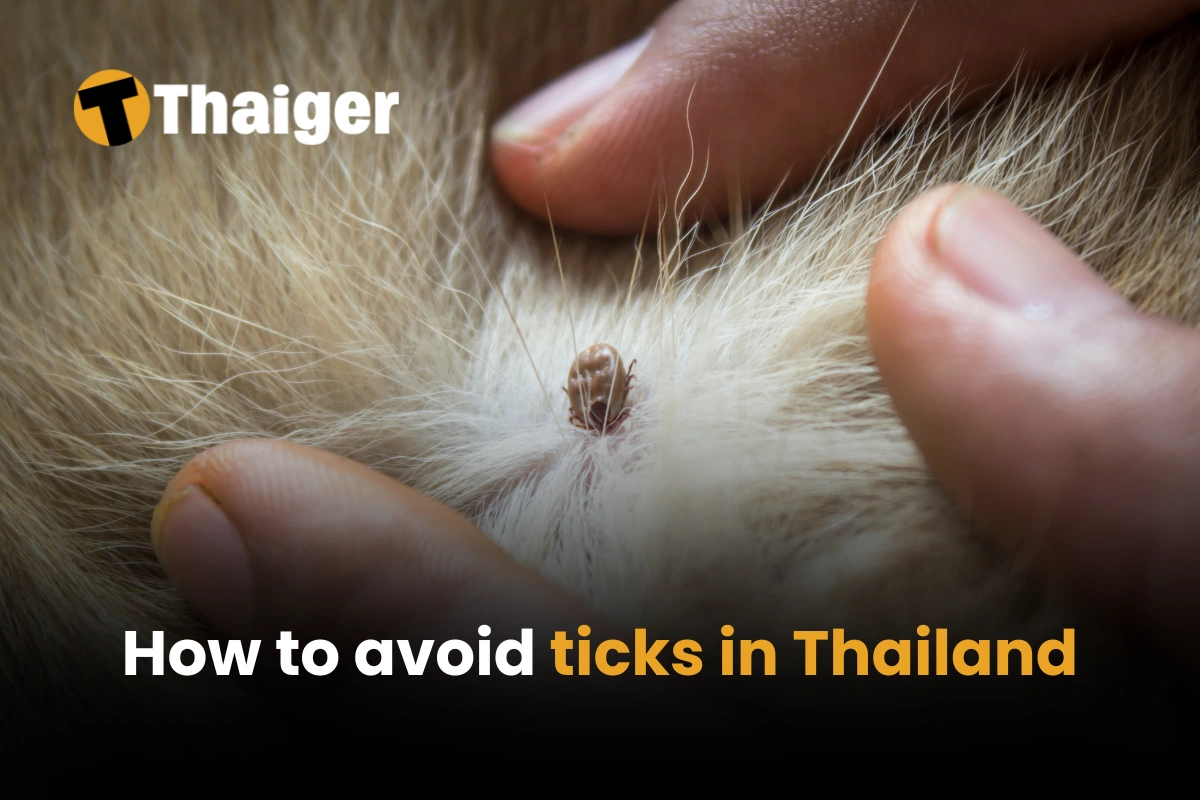
Ticks are a common concern in Thailand’s tropical climate, where warm, humid conditions allow them to thrive. These tiny arachnids can carry diseases that pose serious health risks to both humans and animals. Knowing where ticks are found, their dangers, and how to prevent them is key to staying safe in Thailand.
Tick species and their habitats in Thailand
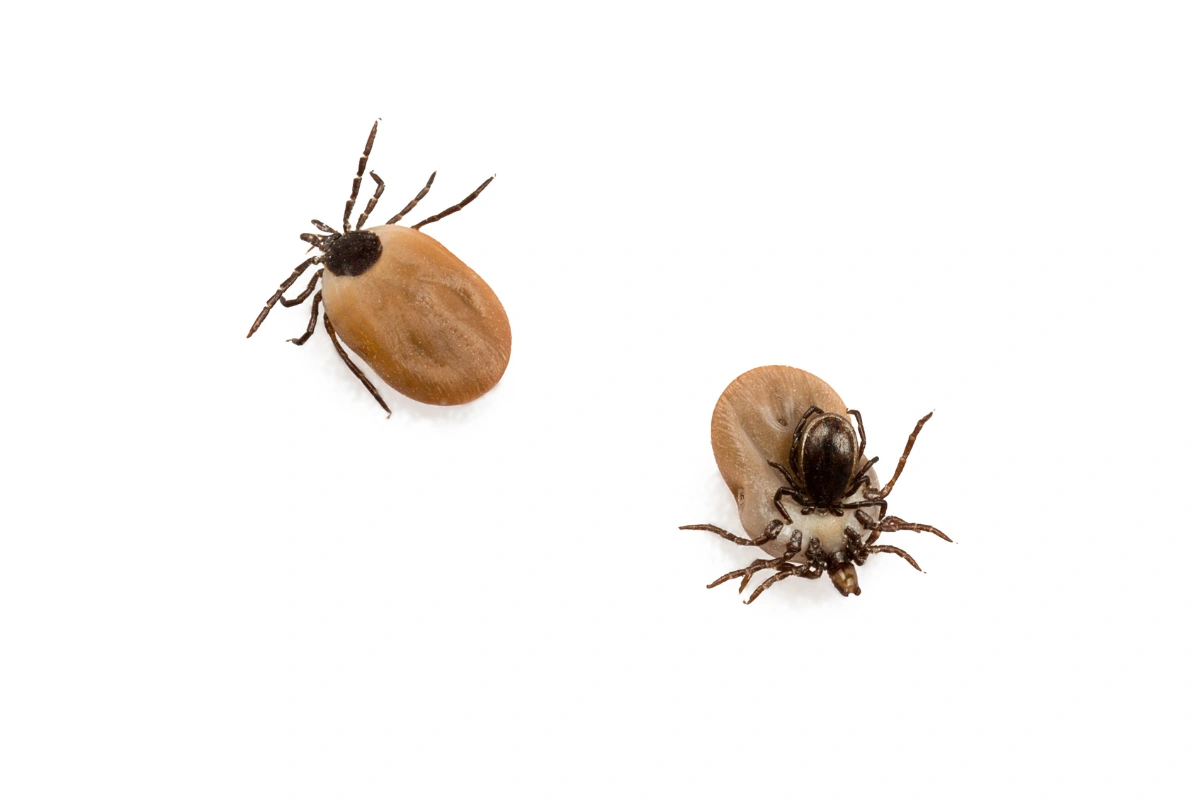
Thailand is home to a variety of tick species, including 58 hard tick species (Ixodidae) and 4 soft tick species (Argasidae). The most common types include Haemaphysalis (25 species), Amblyomma (13 species), Ixodes (10 species), Dermacentor (5 species), and Rhipicephalus (4 species).
Ticks are found in different habitats across Thailand:
- Forests: Areas like Khao Yai National Park host species such as Haemaphysalis lagrangei and H. longicornis.
- Farms: Rhipicephalus microplus is often seen on cattle throughout the region.
- Urban areas: The brown dog tick (Rhipicephalus sanguineus) is common around domestic dogs in cities and suburbs.
- Wildlife habitats: Ticks are frequently found on animals like wild boars, sambar deer, and barking deer.
When are ticks the most active?
Ticks in Thailand are active year-round due to the tropical climate but may increase during hotter, more humid periods. Some species, like Amblyomma, have higher infection rates for tick-borne diseases, followed by Haemaphysalis and Dermacentor. People should take precautions, especially in areas with a high tick population, to minimise the risk of tick-borne illnesses. Understanding where ticks live and how they spread diseases is key to staying safe.
Tick-borne diseases in Thailand
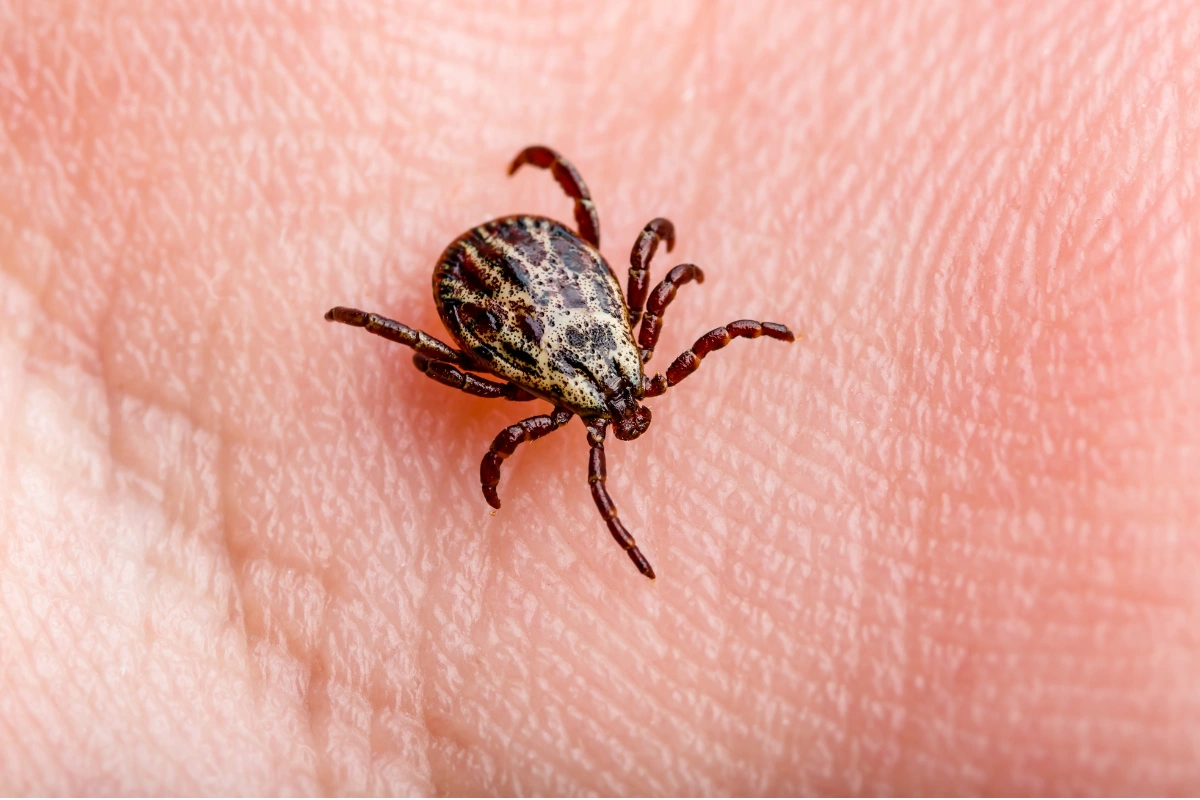
Tick-borne diseases (TBD) are a serious health concern in Thailand, affecting both humans and animals. The most common pathogen is Rickettsia spp., responsible for most human infections. Other pathogens found in ticks include Ehrlichia spp., Anaplasma spp., and Borrelia spp. While Lyme disease is less common in Southeast Asia than in places like North America or Europe, it is still a potential concern in Thailand.
Thailand’s wide range of tick species contributes to the variety of diseases they can spread. Ticks from genera such as Rhipicephalus, Haemaphysalis, Dermacentor, and Amblyomma have been found to carry these pathogens. A study in Khao Yai National Park revealed that Amblyomma spp. had the highest infection rate, with 20.5% of ticks carrying harmful pathogens, posing a significant risk to humans.
As tick populations thrive in Thailand’s tropical climate, understanding the risks and practising effective prevention is essential to protect public health.
| Disease | Pathogen | Symptoms |
| Rickettsiosis | Rickettsia spp. | Fever, rash, headache |
| Ehrlichiosis | Ehrlichia spp. | Fever, chills, muscle aches |
| Babesiosis | Babesia spp. | Fever, chills, fatigue |
| Hepatozoonosis | Hepatozoon canis | Fever, lethargy, weight loss |
| Lyme Disease | Borrelia burgdorferi | Rash (erythema migrans), fever, fatigue |
How to protect your pet from ticks
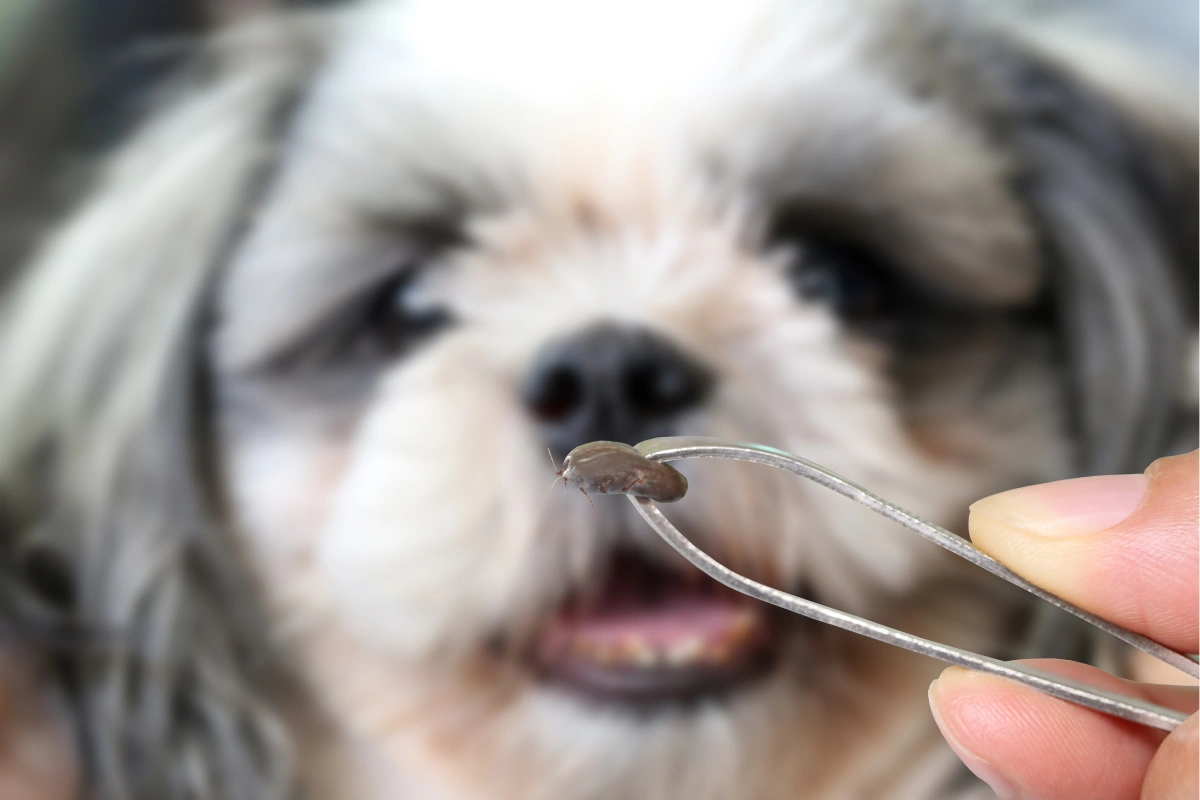
Tick-borne diseases pose a significant risk to pets in Thailand, particularly due to the high population of stray dogs and cats that can harbour ticks. The brown dog tick (Rhipicephalus sanguineus) is the most common tick species affecting dogs in Southeast Asia, including Thailand.
To protect your pets:
- Apply veterinarian-recommended tick prevention products regularly, such as spot-on treatments or collars.
- Conduct thorough tick checks after outdoor activities, focusing on ears, paws, and skin folds.
- Keep your yard well-maintained by regularly mowing grass and removing leaf litter.
- Consider limiting your pet’s exposure to areas with high tick populations, especially during peak seasons.
If you find a tick on your pet, remove it carefully using fine-tipped tweezers or a tick removal tool. Grasp the tick close to the skin, especially at the tick’s mouth, and pull upward with steady pressure. After removal, clean the bite area and monitor your pet for signs of illness.
Common tick-borne diseases in Thai pets include ehrlichiosis, babesiosis, and hepatozoonosis. If you notice symptoms such as fever, lethargy, or loss of appetite, consult a veterinarian promptly, as early detection and treatment are crucial for managing these diseases.
What to do if a tick is actively biting you
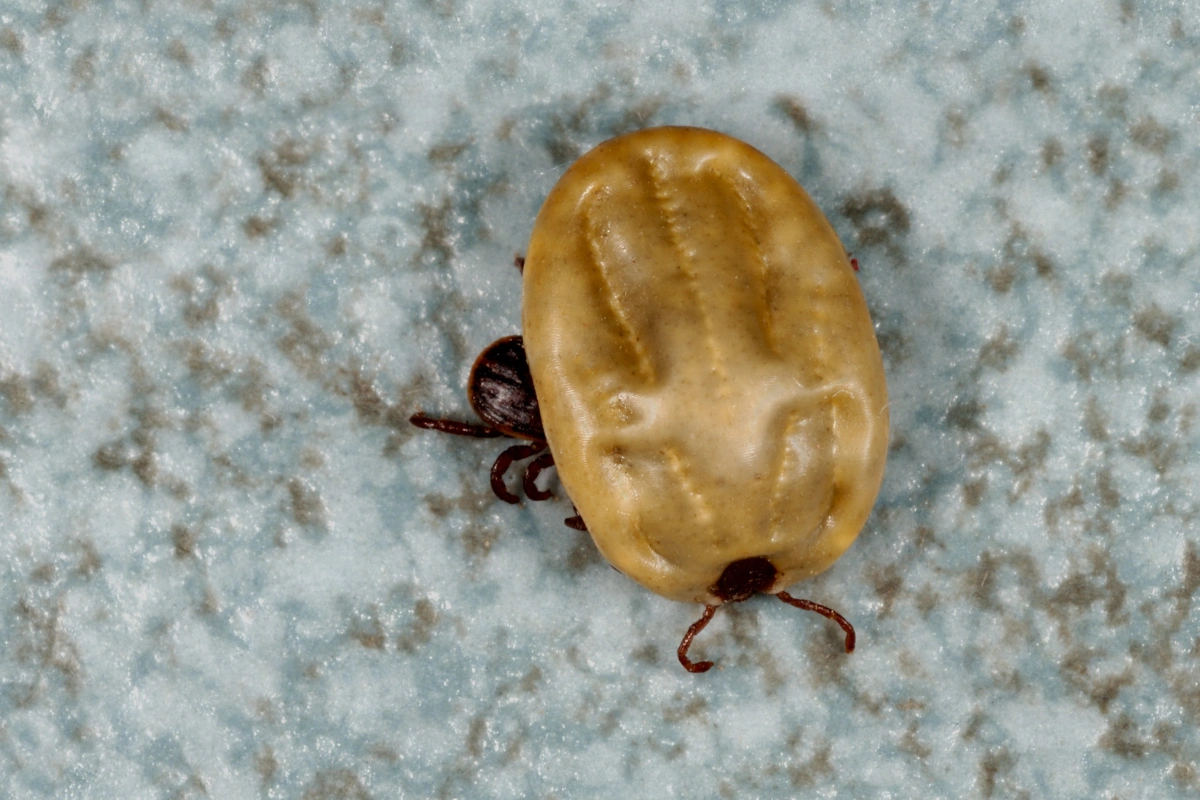
If you find a tick actively biting you in Thailand, it’s crucial to remove it safely and promptly to minimise the risk of disease transmission. Follow these specific steps for effective tick removal.
Step-by-Step Tick Removal Procedure
- Gather your tools: Use fine-tipped tweezers or a specialised tick removal tool. Ensure they are clean and sterilised before use.
- Grasp the tick: Pinch the tick as close to your skin’s surface as possible. This helps ensure that you remove the entire tick, including its mouthparts.
- Pull steadily: Pull upward with steady, even pressure. Avoid twisting or jerking motions, as these can cause the tick’s mouthparts to break off and remain embedded in your skin.
- Clean the bite area: After removing the tick, clean the bite area thoroughly with rubbing alcohol, soap and water, or an antiseptic wipe. This helps prevent infection.
- Wash your hands: Clean your hands thoroughly after handling the tick to avoid any potential contamination.
- Dispose of the tick: Do not crush the tick with your fingers. Instead, dispose of it by submersing it in alcohol, sealing it in a plastic bag, or flushing it down the toilet. This ensures that it cannot reattach or pose a risk to others.
Post-removal monitoring
- Observe the bite site: Keep an eye on the area for several weeks for any signs of infection or unusual symptoms.
- Watch for symptoms: Be alert for symptoms such as fever, rash, or flu-like illness, which may indicate a tick-borne disease. If any symptoms develop, seek medical attention promptly.
- Inform your healthcare provider: When visiting a doctor, provide details about the tick bite, including when it occurred and where you believe you acquired it.
By following these steps diligently, you can safely remove a tick and reduce your risk of contracting tick-borne diseases while enjoying outdoor activities in Thailand.
Prevention tips for ticks
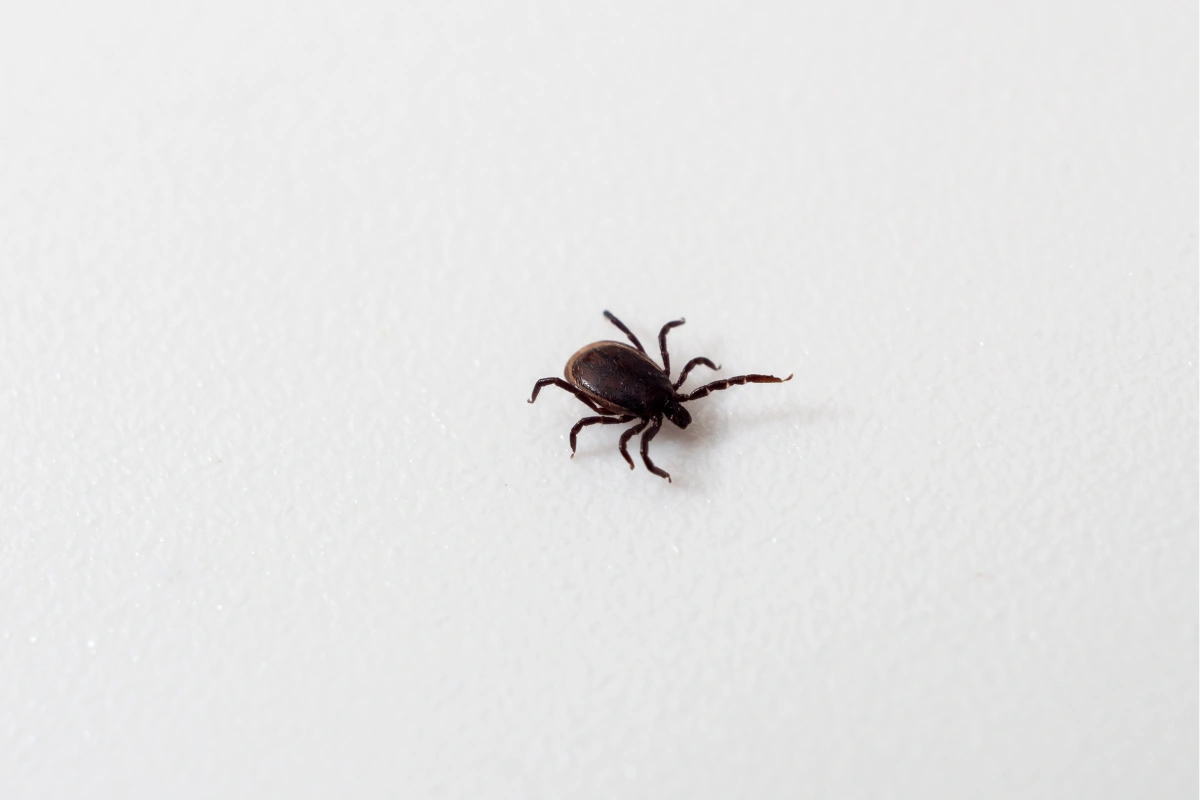
Preventing tick bites is essential for staying safe in areas where ticks are common. By taking simple precautions and being mindful of your surroundings, you can significantly reduce the risk of tick-borne diseases while enjoying outdoor activities.
Personal prevention tips
Personal prevention tips are key to protecting yourself from tick bites and the diseases they may carry:
- Wear protective clothing: Choose light-coloured clothes to spot ticks easily and wear long-sleeved shirts and pants, tucking pants into socks to block ticks.
- Use insect repellents: Apply 20-30% DEET on exposed skin. Use permethrin-treated clothing, but never apply permethrin directly to the skin.
- Check for ticks: Inspect your body after being outdoors, focusing on hidden areas like armpits, scalp, and behind the ears. Check children and pets for ticks as well.
- Handle clothes properly: After spending time outdoors around forests or vegetated areas, put your clothes in a hot dryer for at least 10 minutes to kill any ticks.
- Stay on trails: Stick to marked paths while hiking and avoid sitting directly on grass or the ground in tick-prone areas.
Environmental precautions
To effectively reduce tick populations in your outdoor spaces in Thailand, consider implementing the following environmental precautions especially if you have a garden or yard:
- Keep your lawn neat: Mow the grass and trim tall plants, especially near wooded areas or fences, to remove places where ticks can hide.
- Clear leaves and clutter: Remove piles of leaves, brush, and yard waste where ticks and small animals might live.
- Use barriers: Create a border of wood chips or gravel between your lawn and wooded areas to stop ticks from moving into your yard.
- Let sunlight in: Trim trees and bushes to allow more sunlight, as ticks prefer shady, damp places.
- Keep wildlife away: Remove outdoor pet food and bird feeders to avoid attracting animals that can carry ticks. Adding a fence can help keep deer and other wildlife out of your yard.
- Check your yard often: Look for ticks in shady, damp areas after rain or during tick season, and clean up those spaces to reduce their presence.
FAQ for how to avoid ticks in Thailand
What are ticks and why are they a concern in Thailand?
Ticks are small arachnids that thrive in warm, humid climates, such as Thailand's. They can carry diseases that pose serious health risks to both humans and animals, making it essential to understand their habitats, dangers, and prevention methods.
What species of ticks are found in Thailand?
Thailand is home to numerous tick species, including:
- Hard ticks (Ixodidae): 58 species, with common types being Haemaphysalis (25 species), Amblyomma (13 species), Ixodes (10 species), Dermacentor (5 species), and Rhipicephalus (4 species).
- Soft ticks (Argasidae): 4 species.
Where are ticks commonly found in Thailand?
Ticks inhabit various environments:
- Forests: Such as Khao Yai National Park.
- Farms: Particularly on cattle.
- Urban areas: Commonly found around domestic dogs.
- Wildlife habitats: Present on animals like wild boars and deer.
When are ticks most active in Thailand?
Ticks are active year-round due to the tropical climate, with increased activity during hotter and more humid periods. Certain species exhibit higher infection rates for tick-borne diseases during these times.
What should I do if a tick bites me?
If bitten by a tick:
- Gather tools: Use fine-tipped tweezers or a specialised removal tool.
- Grasp the tick close to the skin and pull upward steadily without twisting.
- Clean the bite area with antiseptic.
- Dispose of the tick safely by submersing it in alcohol or sealing it in a bag.
- Monitor the bite site for signs of infection or illness
What personal precautions can I take to prevent tick bites?
To minimise the risk of tick bites:
- Wear light-colored clothing and long sleeves.
- Use insect repellents containing 20-30% DEET.
- Check your body for ticks after outdoor activities.
- Stay on marked trails while hiking.
How can I reduce tick populations in my yard?
- Keep your lawn neat by mowing regularly.
- Clear away leaves and clutter where ticks may hide.
- Create barriers using wood chips or gravel between your lawn and wooded areas.
- Trim trees to allow sunlight into your yard.
How can I protect my pets from ticks?
To safeguard pets from tick-borne diseases:
- Use veterinarian-recommended tick prevention products.
- Conduct regular tick checks after outdoor activities.
- Maintain a tidy yard by mowing grass and removing debris.
- Limit exposure to high tick-population areas.
Latest Thailand News
Follow The Thaiger on Google News:


























